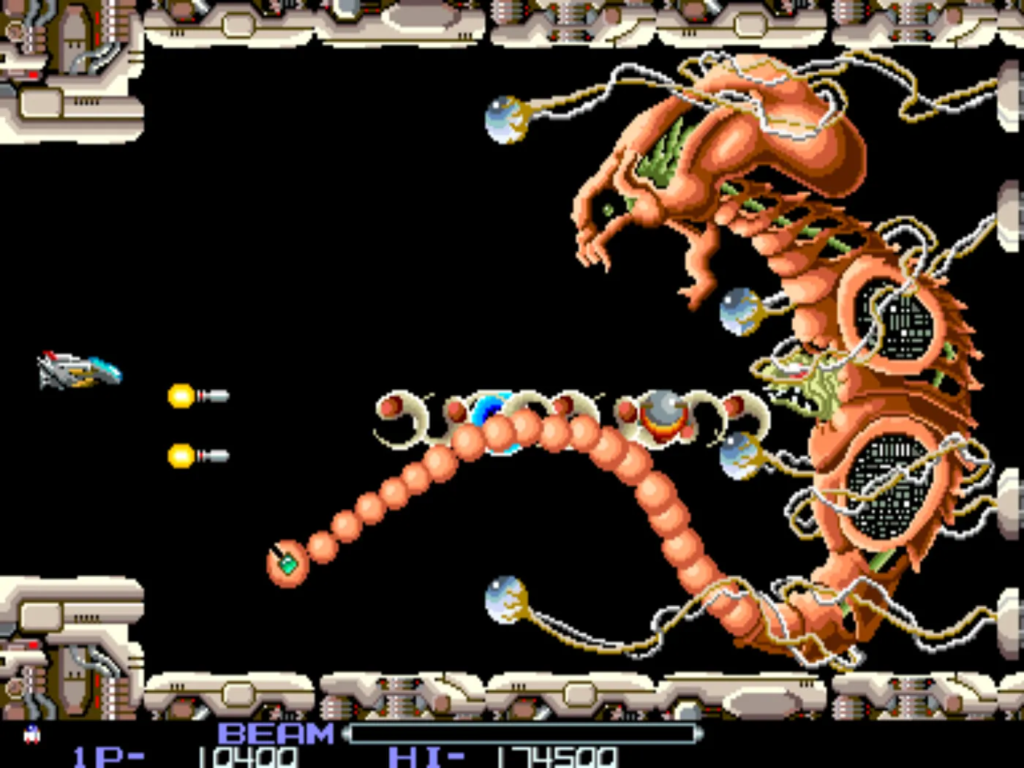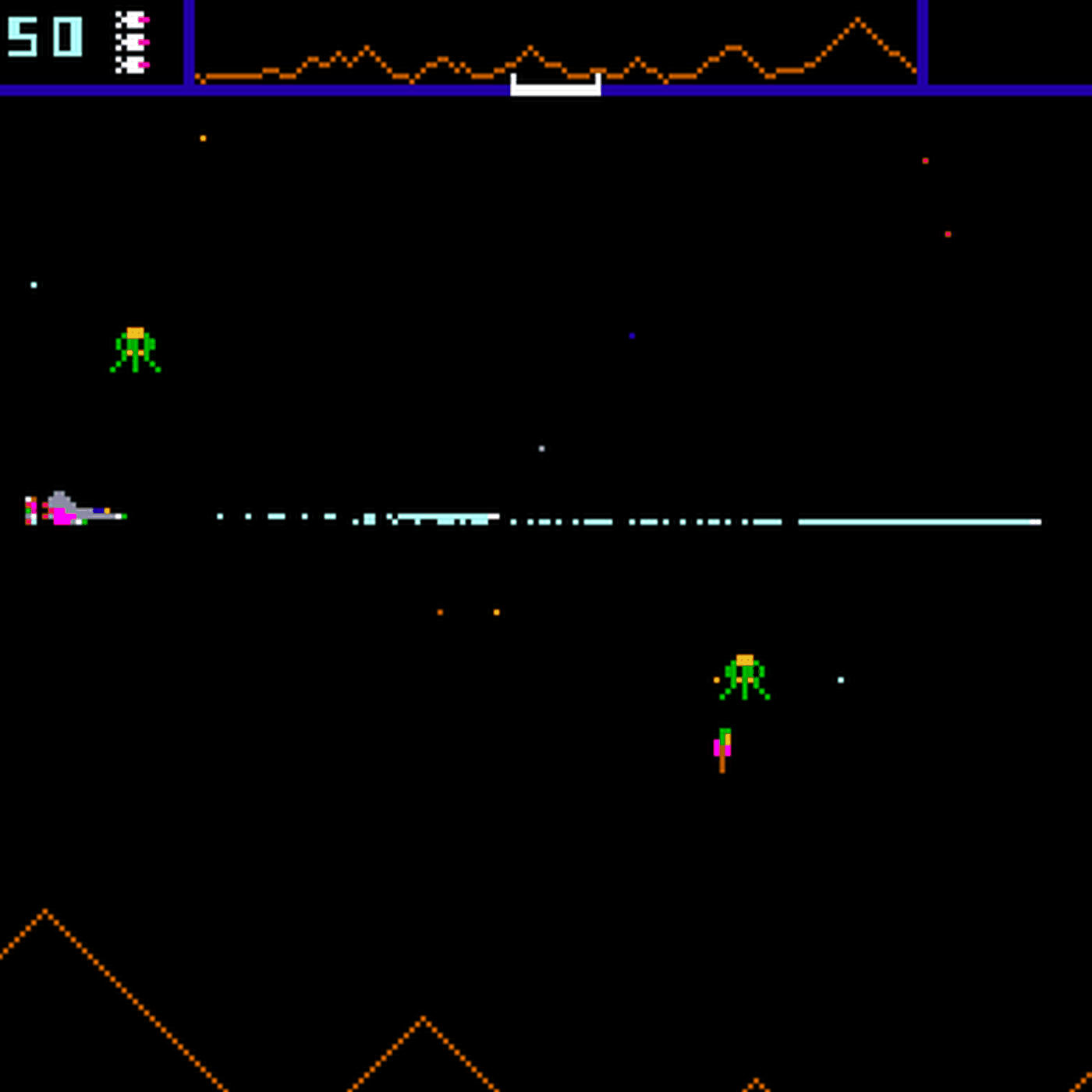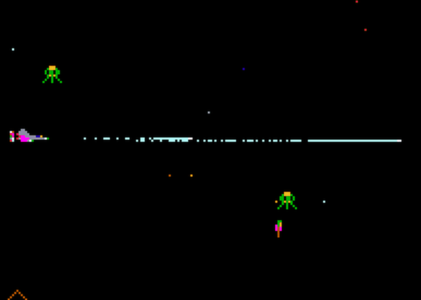In the golden era of arcade gaming, few titles could rival the excitement and intensity of Defender (1980). Explore the universe of this iconic game, its gameplay, strategies, and cultural impact, and discover its enduring legacy.
1. Introduction
In the early 1980s, the world was gripped by a fever known as “arcade mania.” One game, in particular, became an icon of this era – Defender. Created by Williams Electronics and unleashed upon the gaming world in 1980, Defender transcended the arcade scene and left an indelible mark on the gaming industry. In this journey through time, we’ll delve into the genre of Defender, the platforms it graced, its gameplay, key features, strategies, reviews, cultural impact, sequels, and similar games that followed in its wake.
2. Genre and Platforms
2.1 Genre
Defender falls into the realm of side-scrolling, shoot ’em up video games. It’s often categorized as a “horizontal scrolling shooter” and is considered a pioneer of the genre. What set Defender apart from its contemporaries was its innovative gameplay and a dynamic, ever-scrolling game world that challenged players’ reflexes and strategic thinking.
2.2 Platforms
Defender initially took flight in the arcade scene, becoming a sensation in dimly lit, neon-soaked game rooms across the globe. Its immense popularity led to numerous adaptations on various platforms. The game was ported to home consoles, including the Atari 2600, Atari 5200, and even the Atari 8-bit family of computers. Defender’s success ensured its presence on many platforms, making it accessible to a wide audience.
3. Gameplay
3.1 The Heroic Pilot
In Defender, players assumed the role of a daring pilot tasked with defending a series of humanoids from alien abductors. You controlled a small spaceship equipped with laser cannons and a limited supply of smart bombs.
3.2 The Perpetual Battle
The game was relentless, featuring a horizontally scrolling landscape that constantly moved to the left. Waves of alien invaders, including mutants and landers, relentlessly attacked the humanoids below. Your mission was to protect these humanoids by shooting down the aliens and preventing abductions.
3.3 Unique Gameplay Elements
What set Defender apart was its innovative gameplay mechanics. Unlike traditional shooters, Defender allowed players to fly in both directions, left and right, providing unprecedented freedom of movement. Additionally, the game introduced the concept of “hyperspace,” enabling players to teleport to a random location on the screen, a risky maneuver that added an element of unpredictability.
3.4 Saving Humanoids
The core objective was to protect and rescue humanoids by picking them up in mid-air after shooting the alien abductor carrying them. This introduced a layer of complexity, as players had to juggle between defending the humanoids and fending off the alien assault.
4. Key Gameplay Features
4.1 Speed and Precision
Defender demanded lightning-fast reflexes and precise aiming. Alien waves came at you with increasing speed, requiring split-second decisions to survive.
4.2 Smart Bombs
Smart bombs were a precious resource, capable of clearing the screen of enemies. Effective use of these bombs was vital for survival in the later stages of the game.
4.3 Hyperspace
Hyperspace was a double-edged sword. It could save you from imminent danger, but it could also randomly reposition your ship into an even riskier situation.
4.4 Evolving Challenge
As you progressed, the game became progressively more difficult. Faster enemies, deadlier aliens, and a surging difficulty curve kept players on their toes.
4.5 High Score Pursuit
Like many arcade games of its time, Defender ignited fierce competition among players striving to achieve the highest scores. The pursuit of high scores was a significant driver of the game’s addictive appeal.
5. Strategies and Cheats
Defender was notorious for its difficulty, but skilled players developed strategies to conquer its challenges. Here are some essential strategies:
5.1 Alien Prioritization
Prioritize targets based on their threat level. Mutants were among the deadliest, so taking them out early was essential. Alien abductors also required immediate attention to prevent humanoid casualties.
5.2 Efficient Use of Smart Bombs
Smart bombs were scarce, so using them wisely was crucial. Reserve them for moments when you were overwhelmed or in danger of losing too many humanoids.
5.3 Hyperspace Hesitation
Use hyperspace sparingly. It was a last-ditch escape mechanism, and its random nature could be as perilous as your current situation.
5.4 Mastering Movement
Practice precise movement. Defender’s freedom of flight was a double-edged sword; mastering control was key to survival.
5.5 Patience and Practice
Above all, patience and practice were the ultimate strategies. Defender rewarded perseverance and a commitment to mastering its demanding gameplay.

6. Reviews and Cultural Impact
6.1 Critical Acclaim
Upon its release, Defender garnered widespread critical acclaim. Its innovative gameplay, challenging difficulty, and addictive nature were praised by both gamers and reviewers. The game’s graphics, though simple by today’s standards, were cutting-edge at the time and added to its appeal.
6.2 Cultural Phenomenon
Defender wasn’t just a game; it was a cultural phenomenon. It became a staple of arcades and was referenced in popular culture. Its distinctive sound effects, such as the iconic “humanoid in trouble” alert, became instantly recognizable.
6.3 Legacy
Defender’s success paved the way for the growth of the shoot ’em up genre. It inspired countless imitators and sequels, solidifying its status as a classic in the annals of video game history.
6.4 Remakes and Reboots
Over the years, Defender has seen several remakes and reboots, attempting to capture the essence of the original while incorporating modern graphics and gameplay mechanics. These adaptations aimed to introduce the classic to a new generation of gamers while paying homage to its roots.
6.5 Nostalgia and Preservation
Defender continues to hold a special place in the hearts of gamers who grew up during the golden age of arcades. The game’s preservation through emulators and collections ensures that its legacy lives on for future generations to experience.
7. Sequels and Examples of Similar Games
7.1 Sequels
Defender’s success spawned several sequels and spin-offs:
- Stargate (Defender II): Released in 1981, this sequel introduced new gameplay elements, including the ability to warp between different planets.
- Defender 2000: A 1996 release for the Atari Jaguar, this modernized version brought enhanced graphics and gameplay to the franchise.
7.2 Similar Games
Defender’s influence can be seen in various other titles:

- R-Type (1987): This side-scrolling shooter adopted some of Defender’s mechanics while introducing its own unique gameplay features and stunning visuals.
- Gradius (1985): Another classic shooter, Gradius, drew inspiration from Defender’s dynamic scrolling and challenging gameplay.
- Galaga (1981): While not a side-scrolling shooter, Galaga shared the shoot ’em up genre with Defender and was equally beloved in arcades.
- Geometry Wars (2003): In the modern era, Geometry Wars revived the spirit of classic shooters, drawing inspiration from Defender’s legacy.
Defender
Defender (1980) remains an enduring symbol of the arcade era. Its genre-defining gameplay, relentless challenge, and cultural impact ensure its place in gaming history. From its early days in arcades to its presence on various platforms and its influence on subsequent games, Defender continues to inspire gamers and developers alike. Whether you’re a veteran of the arcade or a modern gamer exploring its legacy, Defender’s universe offers a timeless adventure through space and time.
- Defender (1980) – Arcade Museum: Visit the Arcade Museum’s page for detailed information on the original Defender arcade machine, including images and specifications.
- ClassicGaming: Defender: ClassicGaming offers an insightful article about Defender’s impact on the gaming industry and its enduring legacy.
- IGN’s Retro Reviews: Defender: IGN’s retro review of Defender provides a historical perspective on the game’s significance and gameplay.
- Defender World Record Holder: Twin Galaxies is a well-known platform for tracking video game high scores. Check out the profile of Jeff Peters, a Defender world record holder, for some impressive gameplay achievements.
- R-Type Official Website: Explore the official website of R-Type, one of the games mentioned as a similar title to Defender. Learn more about this classic side-scrolling shooter and its impact on the genre.

